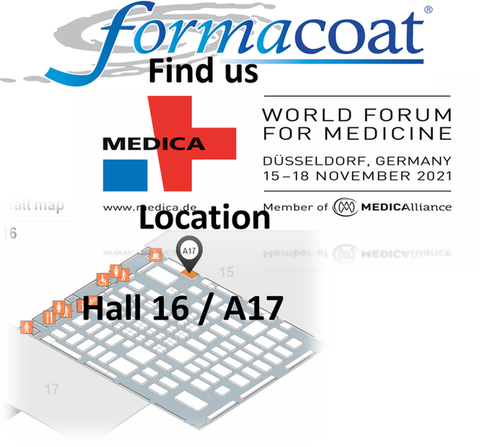Insight to Medical Device Coatings Industry
Rising disposable income in developing regions, a growing proportion of the elderly population, and all of this contribute to the development of the global medical coatings market. Additionally, the growing need for minimally invasive surgical treatments is expected to drive the global medical coatings market.
Doctors use a variety of procedures in minimally invasive surgery to operate with less physical damage than open surgery. There is less discomfort, fewer problems, and a shorter hospital stay with minimally invasive surgery. Compared to typical open surgical approaches, this form of surgery has several advantages. It also has a higher accuracy rate than traditional open surgery in many circumstances. Less invasive medical methods are becoming more important than traditional surgical treatments.
The need for minimally invasive operations has increased as the prevalence of arthritis, cancer and cardiovascular disorders increases, all of which require sophisticated surgical treatment. This has increased the demand for lightweight medical devices capable of traversing complicated and delicate human structures, such as delivery sheaths, balloon angioplasty catheters, guide wires, intravascular catheters, and implant delivery systems.
All of these factors are likely to drive the growth of the global medical coatings market in the near future. To be effective and function efficiently, medical devices and electronic components require protection. Moisture, water content and body fluids are some elements that can contaminate life-saving devices and make them useless. Medical products and coatings provide ideal solutions for most types of substrates, including plastics, glass, metals, silicone, rubber and ceramics. Medical devices and components with medical coatings can be sterilized.
Thanks to recent technological advances, devices and components can be coated with physio-mechanical coatings, which provide protection against moisture, act as an electrical barrier and possess favorable chemical properties. The coatings also provide protection against tribological (lubricating) properties. The deterioration of the mucosal lining has also led to the evolution of antimicrobial coatings, which provide protection against microbial function.
Today, medical coatings are routinely used to improve device performance and provide better product surface functionality. Additionally, medical coatings help reduce friction between devices and tissues and provide support in surface coverage and overall homogeneity. Almost all medical devices require non-stick coatings over molded electrical insulation and biocompatible and other finishes.
The global medical coatings market is expected to expand significantly in the coming years. This is due to its prevalent use in guidewires, catheters, syringes, hypotubes, stents, mandrels and sutures. The growing demand for life-saving coatings for instruments and devices from the medical and healthcare industry is expected to increase the use of medical coating products. Additionally, increased demand for durable life-saving devices in developing economies in Latin America and Asia Pacific, such as India, China and Brazil, is expected to increase adoption of medical coating products.
However, the threat of substitutes, product aging, lower quality cloned products, reduced shelf life and rising costs are estimated to hamper the market in the foreseeable future. Additionally, changes in government regulations and policies for medical devices in several countries are expected to hinder the global medical device coatings market.
The global medical coatings market can be segmented by type, application and region. In terms of type, the market can be divided into antimicrobial and hydrophilic lubricants and coatings. Hydrophilic coatings are widely used in medical products such as introducer sheath catheters and guide wires to reduce friction. Demand for hydrophilic coatings is expected to be high in the coming years due to material advantages such as low coefficient of friction, lubrication and durability. Depending on the application, the medical coatings market can be classified into implants, medical devices, medical equipment and instruments, among others. The medical device segment is expected to dominate the market due to increased demand for healthcare products.
In terms of region, the global medical coatings market can be classified into North America, Europe, Latin America, Asia Pacific and the Middle East and Africa (MEA). North America is expected to dominate the global medical coatings market. Europe and Asia Pacific are likely to follow. The Asia Pacific market is expected to expand at a rapid pace over the next few years. The region's market is expected to be driven by an expansion of the medical industry, an increase in the geriatric population, an increase in disposable income, unmet demand for products, and increased investment in the care sector by the government and agencies. private. The global market for medical coatings is rapidly expanding thanks to the presence of large and medium-sized medical equipment and pharmaceutical manufacturing companies.

